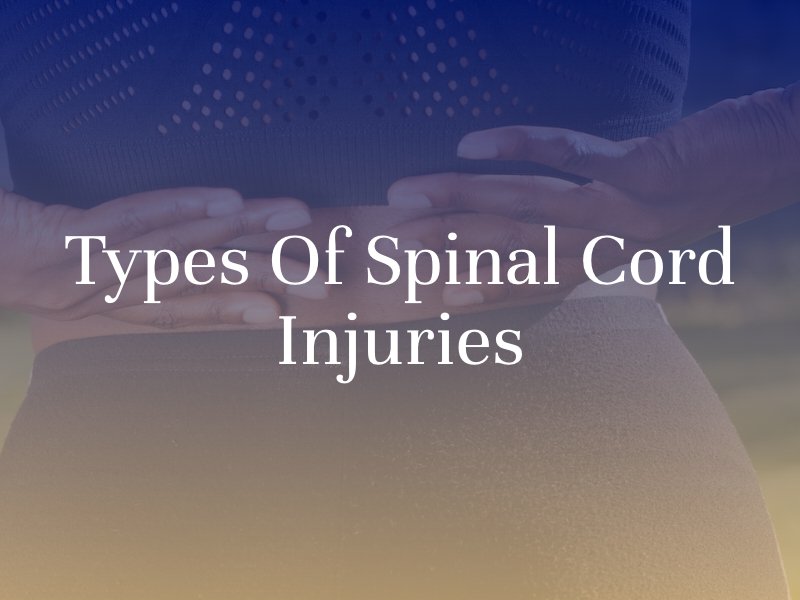
Types of Spinal Cord Injuries
Colburn Law
Posted in Personal Injury,Spinal Cord Injury on September 6, 2022
The spinal cord is one of the most important structures in the human body. This collection of nerves, which are protected by bones called vertebrae, are responsible for communicating messages from the brain to the rest of the body. If any part of the spinal cord is damaged, a person’s life could change forever.
Severe pain, permanent paralysis, and a loss of sensation are only some of the complications that can arise after a spinal cord injury. Doctors classify these injuries as complete or incomplete to better understand the impact of the damage and determine the best course of treatment.
Complete versus Incomplete Spinal Cord Injuries
There are two general types of spinal cord injuries: complete injuries and incomplete injuries.
When a person sustains a complete spinal cord injury, the spinal cord is completely severed. As a result, the brain can no longer send messages to the area below the injury. The patient will likely lose all sensation and mobility in the affected area.
The cord is not completely severed when an incomplete spinal cord injury occurs. As a result, the patient could retain some feeling and function below the injury. However, the degree of function is different for every patient.
Types of Incomplete Spinal Cord Injuries
There are many types of incomplete spinal cord injuries, each with its own symptoms and complications. Some of the most common include anterior cord syndrome, Brown-Sequard syndrome, and central cord syndrome.
- Anterior Cord Syndrome: Anterior cord syndrome occurs when nerves in the front two-thirds of the spinal cord are damaged. While the patient may still feel sensations, he or she may struggle to move independently.
- Brown-Sequard Syndrome: This condition occurs when one side of the spinal cord is more severely injured than the other. For example, a patient with Brown-Sequard syndrome may be able to move his or her right leg, but unable to move the left leg.
- Central Cord Syndrome: Central cord syndrome affects the center of the spinal cord. Patients may experience paralysis in the arms, loss of fine motor skills, and loss of bowel and bladder function. Paralysis in the legs may occur, but may not be as severe.

Types of Complete Spinal Cord Injuries
There are two main types of complete spinal cord injuries: tetraplegia and paraplegia,.
- Tetraplegia: This injury affects the cervical portion of the spinal cord, which is located near the base of the brain. Tetraplegia is the most severe spinal cord injury and causes paralysis in all four limbs. Patients can struggle to breathe, go to the bathroom, eat, and perform other daily tasks.
- Paraplegia: This injury affects the thoracic spinal cord, which is located in the middle of the back. With paraplegia, a person’s bottom half becomes completely paralyzed and he or she is unable to move his or her legs. These injuries are also very severe and require lifelong accommodations.
Recovering Compensation for a Spinal Cord Injury
Whether you suffer a complete or incomplete injury, spinal cord damage can change your life. In many cases, someone else’s actions are responsible for your injury. Many spinal cord injuries are caused by acts of violence as well as accidents like falls and motor vehicle collisions.
If you believe that someone else is responsible for your injury, you could file a lawsuit against him or her and recover financial compensation. In these situations, it is important to consult with a Washington spinal cord injury attorney who can represent your case. Contact a lawyer as soon as possible following your injury to discuss your next steps.



